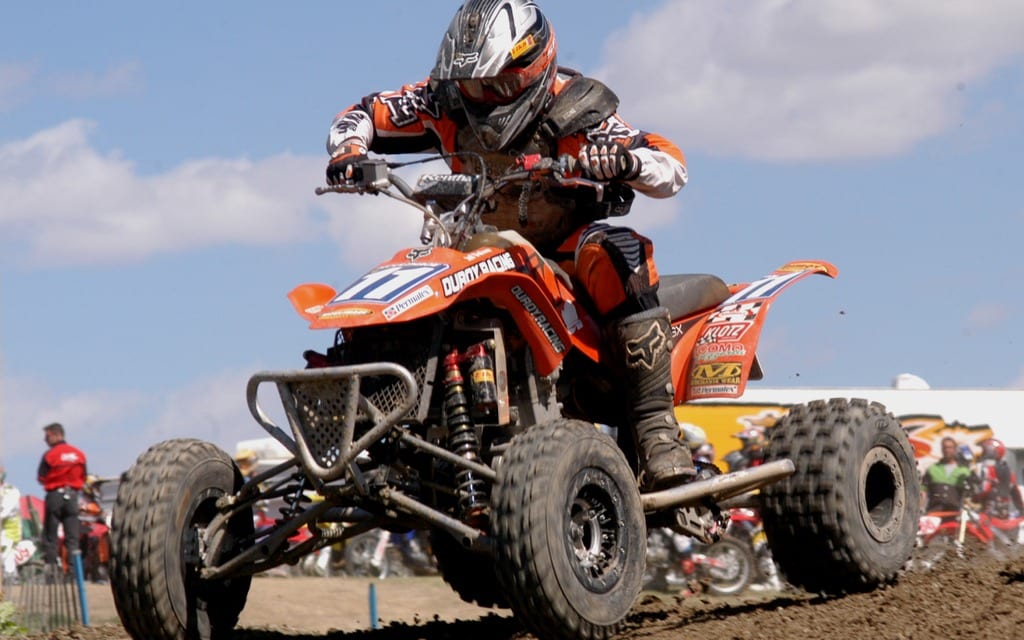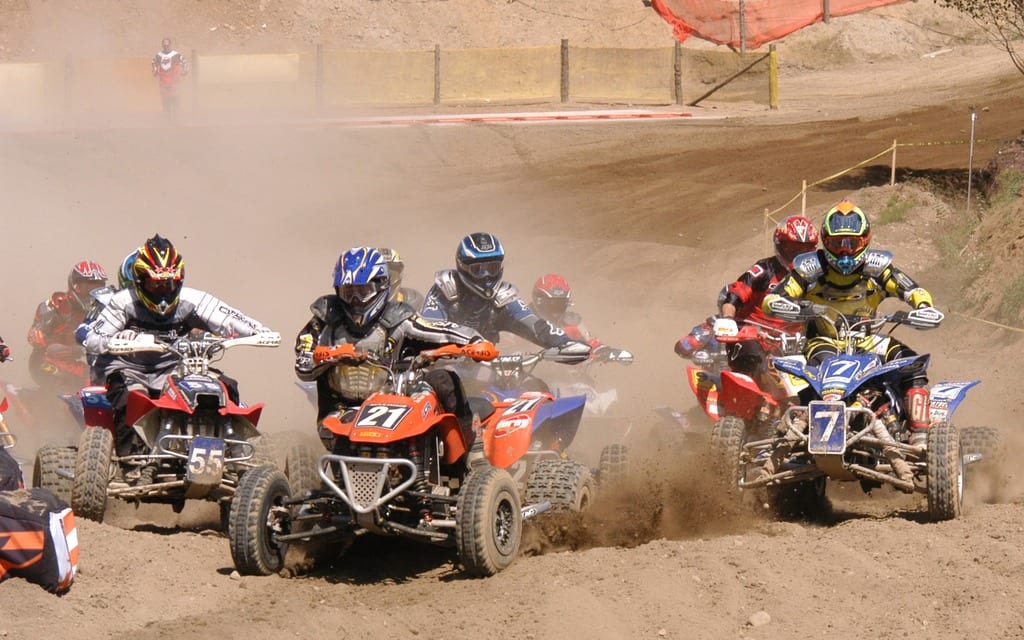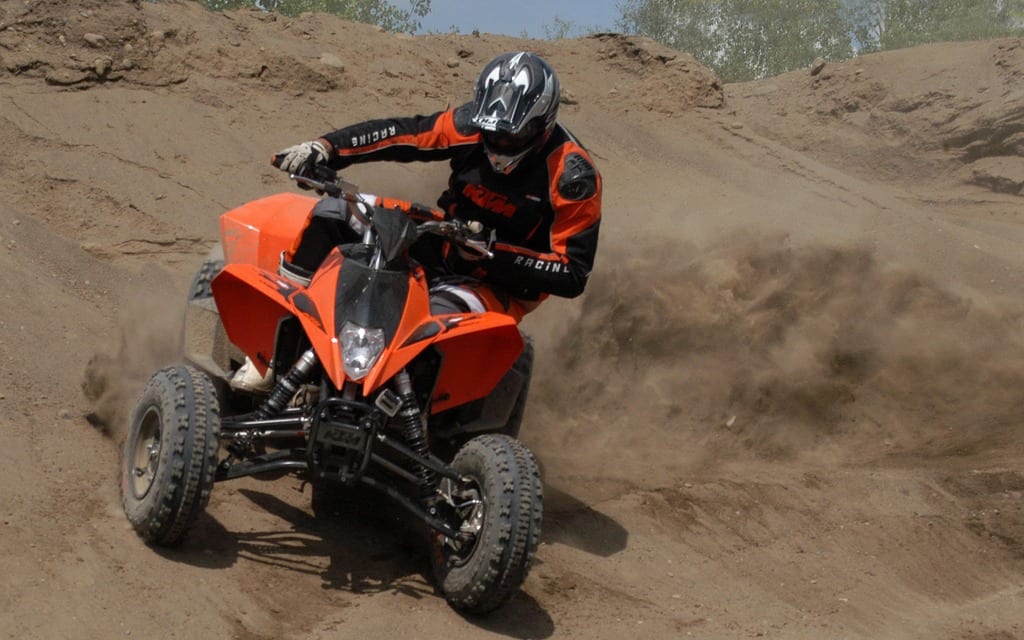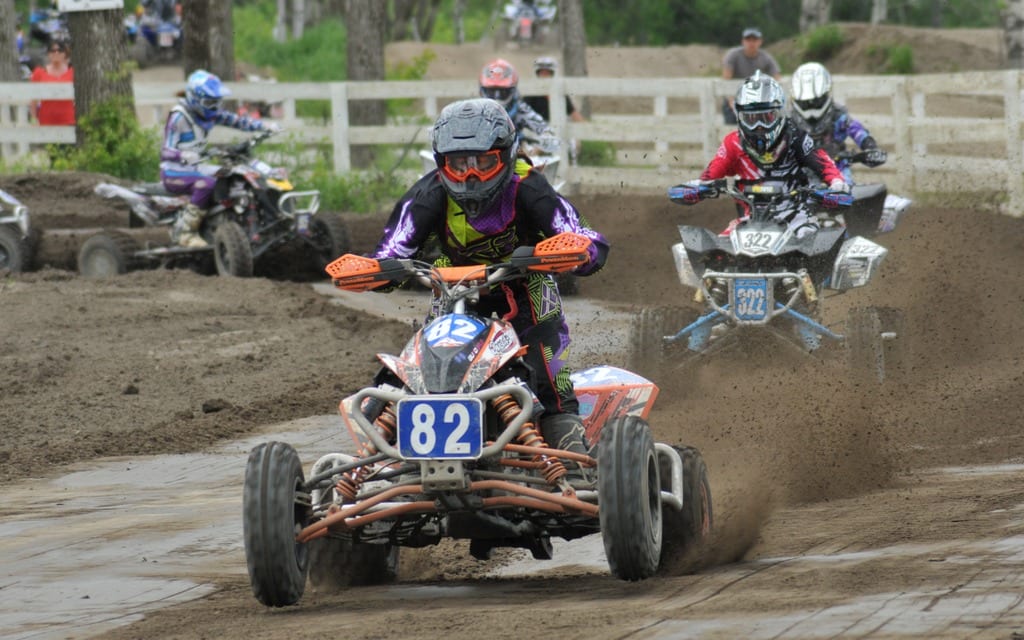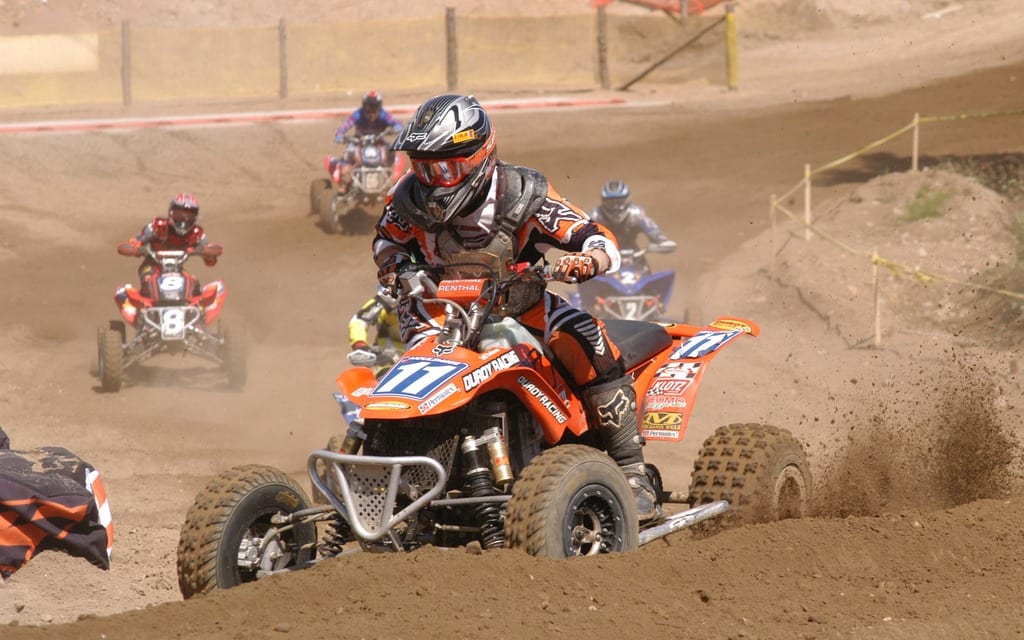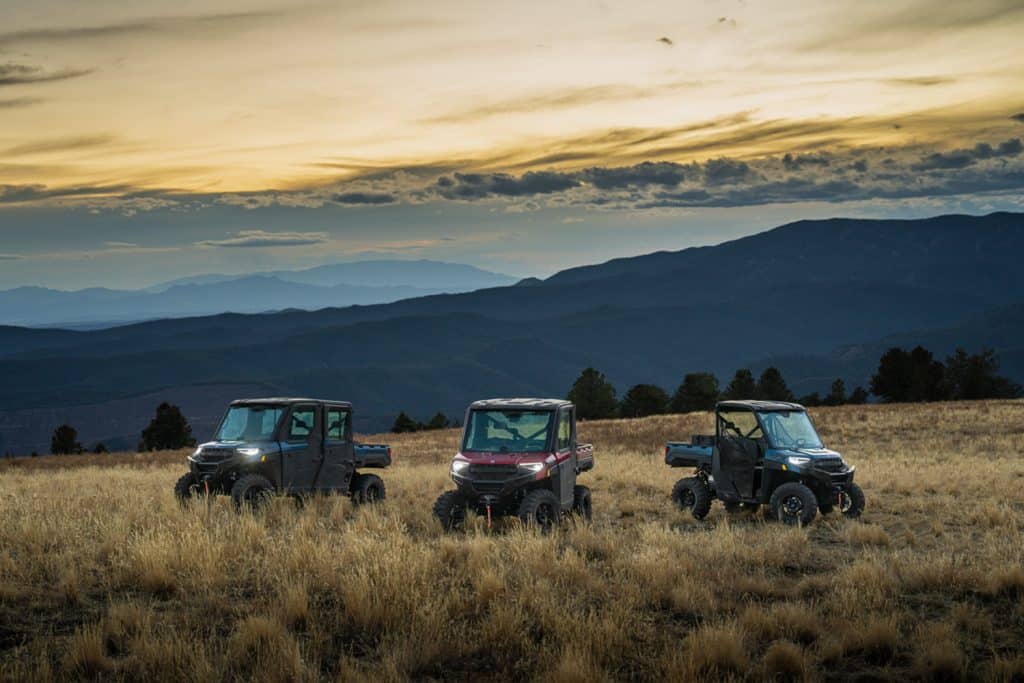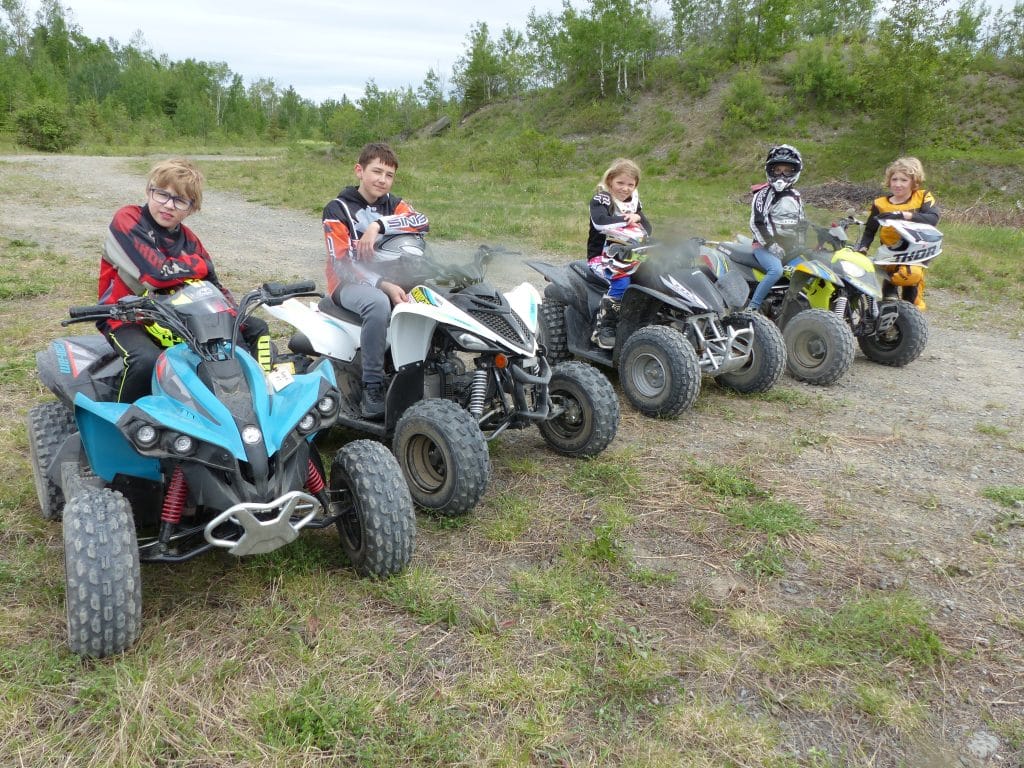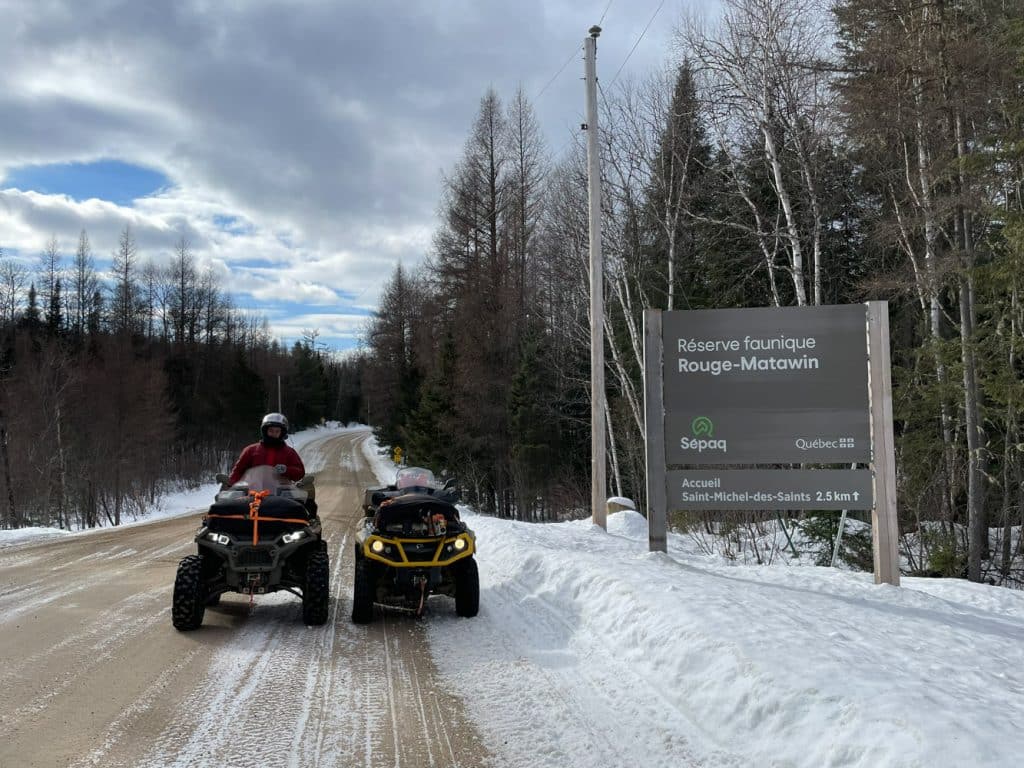When KTM entered the sport ATV market some eight years ago, the Austrian Motorcycle manufacturer caused waves of reactions, most of which were positive. In a technical and performance sense, few could find anything to complain about these amazingly real race-ready offerings, despite the fact that this was their very first attempt to compete in what was still at the time, a fast-growing and highly competitive among manufacturers, segment of the off-road industry.
Much as changed since those exciting times and sport rides seem to be well on their way to becoming an endangered species. Models are quickly disappearing and some OEMs abandoned sport quads altogether. Can-Am and Yamaha remain major sport quad players with continued investment in both models and racing, which has held steadfast.
Like the many motorcycles they build, a KTM quad should last you a long time, as the endurance engineering within all the KTM models is strong and precision focused. Their single cylinder, 4-stroke motors all are built to the highest standards. The 75-year-old Austrian company that oddly enough started out as a small metalworking shop has been manufacturing motorcycles since 1953, so they might have been new at building ATVs but certainly not in creating awesome motorized vehicles.
Long before KTM decided to manufacture ATVs, racers were already creating their own. Long time ATV pro rider Daryl Rath, built a KTM machine using a Walsh Racecraft built chassis and KTM 520 EXC engine. This custom built machine was not only a visual masterpiece but also its combination of precise handling, superb suspension and awesome four-stroke power, made it a formidable foe on any racetrack. Dirt Wheels magazine featured the quad in their May 2002 issue and mentioned that it would also turn out to be a precursor to the future of high performance ATVs, which would also use motocross-based four-stroke powerplants. Here in Canada top racers the likes of Jef Dufour and Daniel Labelle were regulars on Quebec provincial and National championship round podiums. Jef Dufour is owner of Moto Duroy, a KTM dealership in St-Constant Quebec and had retired from racing a few years before KTM came out with the real thing. Moto Duroy is renowned throughout Quebec for its presence at many motocross, motorcycle and ATV events, such as CMRC Compétition, CMRC-Enduro, FMSQ and Supermoto races. They are one of the major suppliers of services during competitions, and offer up the largest inventory of original KTM parts on these circuits. QuadPro, a huge KTM dealer in Mirabel Quebec, was also a big player in the KTM ATV’s short history and they had enough success in selling them that they were buying unwanted units from many U.S. KTM dealerships and reselling them here in Canada. The very last brand new KTM North-American unit was sold there last summer.
KTM stopped production of its still-fresh sport quad lineup and exited the ATV business altogether but that company wasn’t the only one left struggling to sell their sport quads. Polaris quit building its MXR 450 just two years after its introduction in 2008. Honda’s TRX700XX, with its innovative but unloved independent rear suspension, also left the stage so prematurely that many riders don’t even know of its existence. While Suzuki’s LT-R450 is still found at racetracks but not in showrooms, only the Z400 remained in production up until recently but now is also a no show for 2015. Honda still has a Sport section on their website but both the TRX450ER and TRX400X are 2014 models offered with a factory discount. Racing programs were also shelved by several of the major players. While sport quad sales are down, sport quad owners are still riding and racing their machines, and we think that once the economy improves further, sales of new sport ATV units should begin to increase and we could see some of those big names come back.
There was little doubt that the KTM’s could be picked up from the dealership and successfully raced before demanding any additional costs. The chosen 450cc and 525cc single overhead cam four valve engines had delivered reliable performance in a number of racing bikes for over seven model years. The 450 and 525 top ends are interchangeable, and this adds considerably to the versatility of the machine if the owner wants to change racing classes or decides he needs more power for play riding. The 450XC’s nikasil-coated cylinder has a 89mm bore, and the total displacement is 448cc. The 525XC engine displaces 510cc with a 95mm piston. Both engines run an 11:1 compression ratio. Two oil pumps handle the oil flow duties, and tandem oil filters keep the vital fluid fresh as long as possible.
Of course the many KTM equipped Pro riders we know like QuadPro sponsored Bobby Desjardins or Patrick Poissant and a few others, didn’t leave it at that and added many upgrades to pump even more performance out of these already tricky to fully harness quads, keeping them happy for years and still putting them up on podiums to this day. Never the less, all KTM quads are truly competent race machines in fully stock trim. The 450 and 525 XC models were first introduced in 2007 (as 2008 models), and the Motocross race ready 450 and 505 SX came the following year. The price tag was a bit high but we had never seen a stock unit with so many race-readiness features built right into it. Many racers commented on the brutal nature of the power delivery and the overwhelming tuning possibilities, so these are definitely not for anyone. These rides, most definitely set new standards in the sport ATV class, which might not be the ideal choice for beginners, but can be close to perfection for some pros.
If you doubt your skills on any other 450 straight axle two-wheel ground-grinding sport ATV, steer clear of the KTM models! These are race-bred performance quads; there is no mistake about it! None before them had ever offered so many adjustable components. With so many adjustment choices on the shocks, a-arms and bar clamp, it is going to be up to the owners of these machines to take the time to set them up properly. Their price was in keeping with all of the features, usually only available in the form of aftermarket parts. This was certainly a factor that already presented a challenge even if it would have been in a healthy market, as it targeted only a part of the sport ATV community. The any day trail rider just didn’t need all of these high-end quality components with the sometimes even too complicated for their level; adjustment possibilities.
All sport quads need a bunch of aftermarket parts to make them really good xc or mx type racers, or even just a viable trail machine today, since we are having to deal with the fact that fewer trails and more and more power generous 4×4 rides with huge tires are forever changing our terrain to conquer. If you do want that level of performance, it is a lot of money to get any other sport quad to that level that KTM was offering in one complete and more importantly; hassle-free package.
How do they compare to the others? Well if we are keeping everything stock, only Yamaha which has never stopped improving their YFZ and Can-Am that came out strong when introducing the X-xc and X-mx versions of their DS 450, can keep up with these beautiful orange rides. That being said the KTM’s can feel more physically demanding than those others, anyway it did for me in every fight for bragging rights type race against my best friend Fitto (Martin Bouchard) test rider and mind-bogglingly good trick rider. You might remember an ATV Trail Rider shootout cover with me on a KTM 450 SX and Fitto on a Can-Am DS 450 X-mx duking it out. He got a good amount of ride time on the KTM also during that period, as I ended up preferring the DS solely for ergonomic reasons, but stayed always curious to hear Martin’s comment on the KTM. Needless to say we were actually impressed with both machines, as they equally presented an encouraging evolution to the sport as a whole. Still unaware of the upcoming dramatic market crash, we thought it would push other manufacturers into presenting the same sort of game-changing sport machines. Snif, snif… We later got a chance to test the 525 XC and Fitto actually ended up falling totally in love with it, mainly because he rediscovered the fine precision of the KTM, with an incredibly controllable and generous amount of torque from the 510cc engine.
Ok, so you can’t find them anymore in showrooms. What to do? The KTM quad is a brilliant machine – no mistake, and if you see KTM used bikes at good prices – that’s even better for an aspiring racer’s cost savings. A good spot to look for one is at race events. If a Pro or veteran rider sells his or her podium hungry Orange gem, you can be certain that it’s been kept in prime condition and treated with the respect it deserved. I would much rather buy a unit from one of those guys and girls that constantly check the oil and keep their air filtration system sparkly clean, than someone who might have put less running hours on it but mostly rides and waits for something to go wrong before giving it some loving care. FYI, the 505 has a completely different high-strung motor and has been known to not hold together as well as the 525.
An aspiring ATV racer needs to have a list of needs and wants before he or she can even begin to think of rubbing elbows with the best of them. When going down and through this sort of list with a KTM in front of us, it quickly becomes clear that the only extra cost will be the pen we are using to check these off. They come with purpose built tires for plenty of grip and that would usually be among the very first most important and costly changes to make. Douglas wheels, actually developed specifically for this quad, wear these excellent Maxxis RAZRs tires.
Then there the high-quality fully adjustable Ohlins shocks with dual-rate spring preload adjust, as well as precise control on low and high-speed compression and rebound. Also having a huge impact on the handling characteristics of the KTM ATV is the width adjustment of the rear axle that is both heat-treated and adjustable to four widths. The A-arms were also adjustable and the KTM also came stock with a kill switch, big fuel tank, Magura hydraulic clutch, chromoly frame, pro taper handlebars and more. The XC’s Magura four piston (180mm) floating hydraulics with wavy rotors, give it incredible stopping power, but it is up to the rider to learn not to make them lock up, as both the brake lever and foot pedal are quite sensitive.
The KTM air intake system is very different from any other. Air is drawn in from the top of the box and that works magic in keeping the filter clean even when riding in the worst conditions and mud, snow or water finds its way inside of the box. Still, we would love to find less stuff to clean up in there all the time and you’ll need to pay close attention to it on very wet days. The filter is the same foam Twin Air unit as those used on many of KTM dirt bikes, and it is such a common part it should be stocked by most shops. The whole process of changing the filter can be done in less than a minute, without the need for any tools. For race conditions that allow a more open-air box, a removable snorkel piece can be taken off for more airflow. If even more air is required, there are small ducts on the side of the air filter compartment that can be opened up for maximum airflow.
An evolution of these would have certainly included use of an EFI system to feed those hungry engines with just the right recipe for a more worry-free character and smoother all-around feel in engine operation. Sadly KTM’s ATV production stopped and that left us with having to stick a good old carburetor, which is totally fine by many. It is hard to argue the ease of tuning and reliability of the FCR, and the TPS equipped carbs are readily available and easily serviceable. Proper jetting is important any time but really important when riding in cold weather but certainly nothing to be scared of, nor is having to pull the choke when needed. You need to have the jetting pretty close for it to start and run good. The KTM RFS motor also needs to have the valves checked once in a while and it’s a simple thing to do if the tank can come off easily. It only takes about 15 minutes once you have the tank and plastics off. It is a regular maintenance item just as normal as cleaning your air filter. These bikes can be tough to start and need good quality batteries. Do yourself a favour and get the best battery with the most CCA available. There are a few very good options available out there. Jetted properly and with a bigger battery, they never fail to start.
In light of the greatness of these machines, we plead with owners to take great care of them so that future generations can also enjoy them. We foresee that they will stay among the very best and fastest sport quads for a very long time.

